Long-Lasting Safe Animal Enclosure Fencing Solution

Zoo Cable Mesh Order Shipping to Europe
07/22/2025
Eco-Friendly Flexible Mesh Panels for Birds Aviary
08/08/2025The importance of animal enclosure fencing
In modern zoos, wildlife reserves, and various animal breeding facilities, the design and construction of animal enclosures are core elements in ensuring animal welfare and public safety. An ideal animal enclosure must not only provide animals with a comfortable living environment but also possess extremely high safety and durability, capable of withstanding the challenges posed by various weather conditions and animal behavior. With advancements in materials science and engineering technology, stainless steel rope mesh has emerged as an innovative enclosure solution and is increasingly becoming the preferred material in the industry. This article will delve into the multifunctionality and exceptional performance of stainless steel rope mesh in animal enclosure fencing construction, as well as why Liulin stainless steel animal enclosure fencing stands out among numerous products, offering a safe and durable solution for animal protection and management.
The versatility of stainless steel rope mesh
Stainless steel rope mesh demonstrates unparalleled versatility in the construction of animal enclosure fencing, making it an ideal choice for the habitats of various animal species. This material can accommodate the needs of animals ranging from small birds to large predators. By adjusting the mesh size, rope diameter, overall structural strength, it provides customized safe spaces for animals of all sizes. For climbing species, stainless steel rope mesh can create complex three-dimensional activity spaces to meet their innate climbing needs. For raptors birds, the finely woven mesh surface provides a safe flying area without hindering their natural behavioral expressions.
The versatility of stainless steel netting lies in its ability to seamlessly integrate with various architectural structures and landscape elements. It can be easily bent into other complex geometric shapes, creating both aesthetically pleasing and functional animal exhibition environments. Stainless steel rope netting is commonly used to construct aviaries, primate enclosures, predator fences, and protective structures for underwater areas. Its semi-transparent nature ensures an optimal viewing experience for visitors while minimizing interference with the animals’ natural behavior. Additionally, stainless steel rope mesh can be used to create temporary isolation zones, medical enclosures, or transport cages. It can meet various special requirements in animal management and truly embodying the concept of multi-functional design.
Liulin stainless steel animal enclosure fencing netting stands out in animal reserves
Among numerous suppliers of stainless steel animal enclosure fencing, Liulin products stand out globally in animal sanctuary projects for their exceptional quality and professional solutions. Liulin products utilize cutting-edge weaving techniques and material to ensure every inch of the net meets stringent animal safety standards. Their products have demonstrated outstanding performance in practical applications at multiple internationally renowned zoos and wildlife reserves. The products earn high praise from animal experts and park designers. Whether it’s the vast enclosures of African savanna animal zones or the complex three-dimensional spaces of tropical rainforest exhibits, Liulin stainless steel rope mesh provides customized solutions that perfectly balance safety requirements with natural display effects.
The standout feature of Liulin’s animal enclosure fencing lies in its deep understanding of animal behavior and ecological display concepts. Unlike traditional rebar fences or ordinary wire mesh, Liulin’s products achieve nearly “invisible” animal boundaries through precise calculations of mesh size and rope tension. This design allows visitors to enjoy unobstructed viewing experiences while ensuring even the most active animals cannot escape.
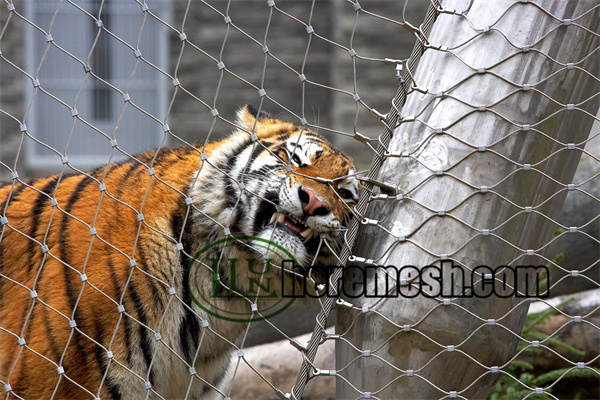
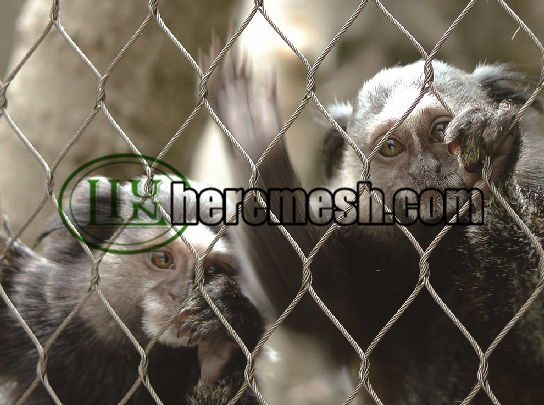
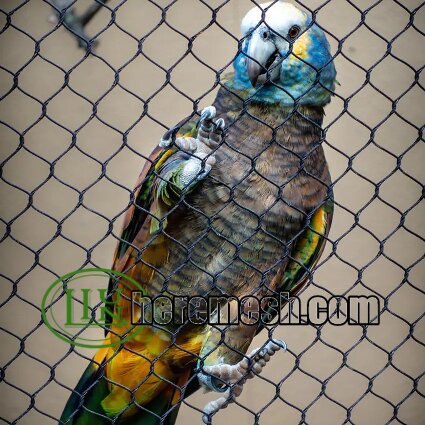
Why choose Liulin zoo animal enclosure fencing?
The reasons for choosing Liulin zoo animal enclosure fencing mesh go beyond its exceptional product quality. They also lie in its comprehensive supply chain management and customer service system. Liulin Company uses 316 or 304 stainless steel as raw materials. After rigorous corrosion-resistant treatment and tension testing, the products maintain stable performance even under extreme climatic conditions. The products have a service life of over 20 years. Each batch of stainless steel rope netting shipped comes with detailed quality certification and performance test reports, ensuring customers can use them with complete confidence. In terms of delivery schedules, Liulin has established mature production processes to ensure timely delivery of large-volume orders. The production schedule meets the time requirements of the customers.
Transportation is one of the key challenges in the implementation of large-scale animal enclosure mesh projects. Liulin has developed specialized packaging and logistics solutions to address this. Stainless steel rope nets are packaged in modular units, significantly reducing transportation volume and weight, thereby lowering customers’ logistics costs. For international projects, Liulin has extensive experience in customs clearance, efficiently handling all export procedures and documentation. This end-to-end service, from production to transportation, has made Liulin a long-term partner for numerous zoos and wildlife reserves worldwide.
Selection of materials: Advantages of stainless steel
When it comes to selecting materials for animal enclosures, stainless steel offers unparalleled comprehensive advantages over traditional materials. It possesses exceptional corrosion resistance, capable of withstanding various environmental factors and maintaining structural integrity over the long term. For aquatic animal habitats or high-humidity environments, stainless steel animal fencing mesh is an ideal choice. Unlike ordinary metals, it does not rust and contaminate water quality, nor does it release harmful substances that could endanger animal health. In terms of mechanical properties, stainless steel boasts an outstanding strength-to-weight ratio. It can provide extremely high levels of safety protection with a relatively lightweight structure, reducing the burden on the supporting structure and lowering the overall construction cost.
Another key advantage of stainless steel is its outstanding flexibility and fatigue resistance. When subjected to animal impacts, mesh can absorb energy through moderate deformation, preventing sudden fractures that could pose a danger. This characteristic is particularly important for enclosures housing large predatory animals. Additionally, the smooth surface of stainless steel, free of sharp edges, significantly reduces the risk of animal injury. From a long-term operational perspective, the maintenance cost of stainless steel animal enclosure fencing is extremely low. They only need to be rinsed with clean water regularly to maintain a good condition. There is no need for frequent repainting or rust prevention treatment. In terms of sustainability, stainless steel is 100% recyclable, aligning with the high environmental standards demanded by modern zoos and wildlife reserves, making it a truly future-oriented material for animal habitat construction.
The safety performance and long-term benefits of stainless steel animal enclosure fencing
Its exceptional safety performance stems from a meticulously designed structural system and stringent quality standards. The professionally designed animal protection netting employs a special weaving technique to ensure that even if a single rope is damaged, the overall structure will not develop gaps large enough for animals to escape. The reasonable mesh size prevents animals’ heads or limbs from getting stuck while effectively blocking small animals from passing through. Based on the size, behavioral habits of different animals, Liulin recommends appropriate mesh specification to create a comprehensive safety barrier.
The initial investment in stainless steel rope animal enclosure fencing may be higher than that of traditional materials. However, when analyzed from the perspective of the entire life cycle cost, it actually offers better economic benefits. Traditional wire mesh is prone to corrosion and deformation, typically requiring replacement every 3-5 years. But high-quality stainless steel rope mesh has a lifespan of over 20 years, significantly reducing replacement frequency and long-term costs. Stainless steel enclosures require minimal regular maintenance, saving substantial labor and material costs. In contrast, conventional steel enclosures require periodic rust removal and repainting, with cumulative maintenance costs often exceeding the initial investment. Additionally, damage to stainless steel rope netting can typically be repaired locally rather than requiring full replacement, further reducing maintenance expenses during use.
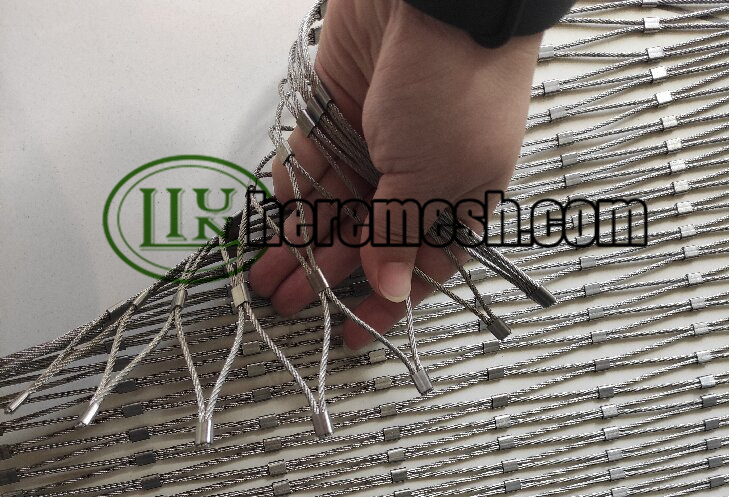
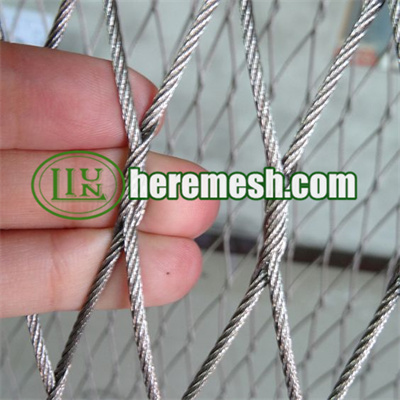
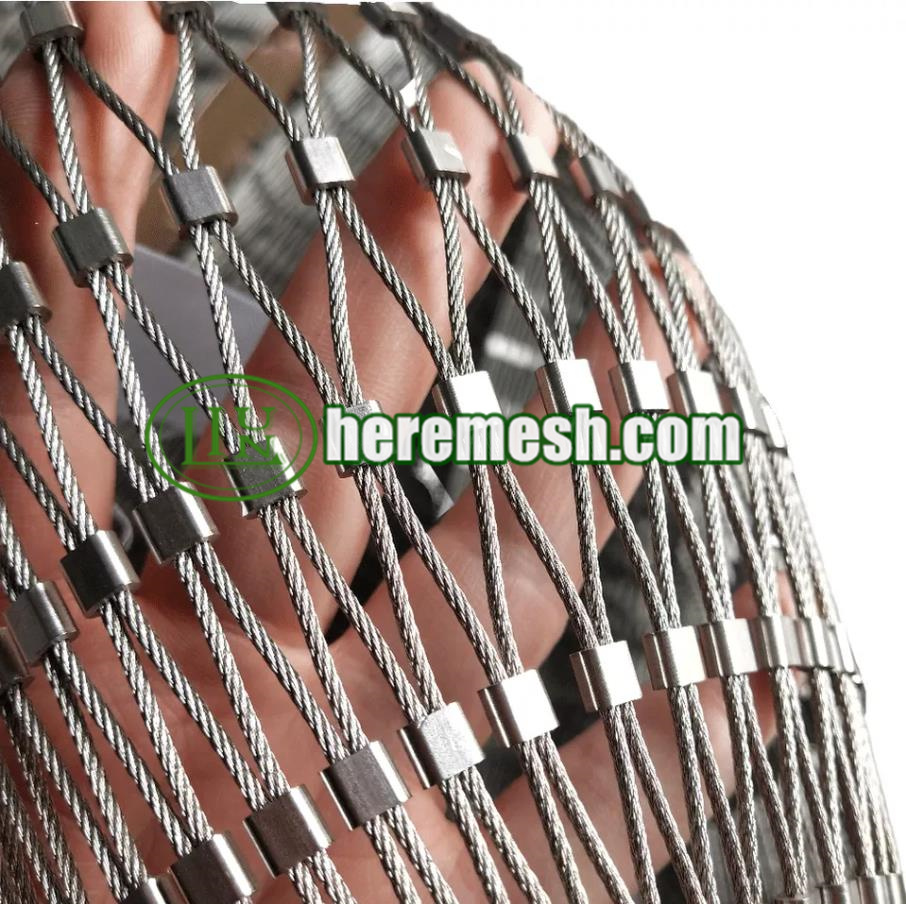
From an operational perspective, the indirect economic benefits of stainless steel animal protection nets are equally significant. Their aesthetically pleasing appearance enhances the overall image of zoos or nature reserves, helping to attract more visitors. Their safe and reliable performance reduces the risk of animal escapes, avoiding associated economic losses. When calculated comprehensively, the long-term costs of stainless steel rope net enclosures are lower than those of ordinary fences. The longer they are used, the more evident the economic benefits become, making them a truly wise long-term investment choice.
Application cases of stainless steel animal enclosure fencing mesh in special animal species
Stainless steel rope netting demonstrates exceptional adaptability in the construction of habitats for various special animal species. Customized designs are employed to meet the unique requirements of different species. In applications involving large carnivores such as lions, tigers, and bears, thicker rope diameters combined with special weaving techniques create safe barriers capable of withstanding impacts of several tons. For primates, stainless steel rope netting not only provides safety barriers but also creates a rich three-dimensional activity space. The mesh size is carefully designed to prevent fingers from getting stuck, and the smooth surface prevents hair from being caught.
In bird applications, stainless steel rope netting overcomes the limitations of traditional bird enclosure materials. Bird parks use ultra-fine (1.5mm) stainless steel rope netting for walk-in bird enclosures, which minimizes obstruction of bird-watching views while effectively preventing small birds from escaping. For birds with strong beaks, such as hornbills and toucans, stainless steel rope netting offers over five times the resistance to pecking and biting damage compared to conventional materials. This mesh in aquatic animal areas such as the crocodile pavilion excellent resistance to saltwater corrosion. This prevents the rapid deterioration of conventional materials in humid environments. Even for animals like kangaroos with remarkable jumping abilities, stainless steel rope nets can provide reliable safety. Through professional design and material selection, stainless steel rope nets can meet the special needs of almost all animal species.
Aesthetic design of stainless steel animal enclosure mesh
Modern zoo design increasingly emphasizes the perfect integration of animal welfare, safety requirements, and visitor experience, with stainless steel rope mesh playing a key role in this trend. This mesh, with its semi-transparent properties, creates an almost “barrier-free” effect, allowing visitors to enjoy an immersive natural observation experience. Designers can leverage the malleability of stainless steel rope netting to create smooth curves and organic forms, ensuring that enclosure structures harmoniously blend with the surrounding landscape. The aesthetic advantages of stainless steel rope netting also extend to its ability to support various themed design requirements. By adjusting the weaving density and pattern variations, it can accommodate the needs of different animal display strategies.


